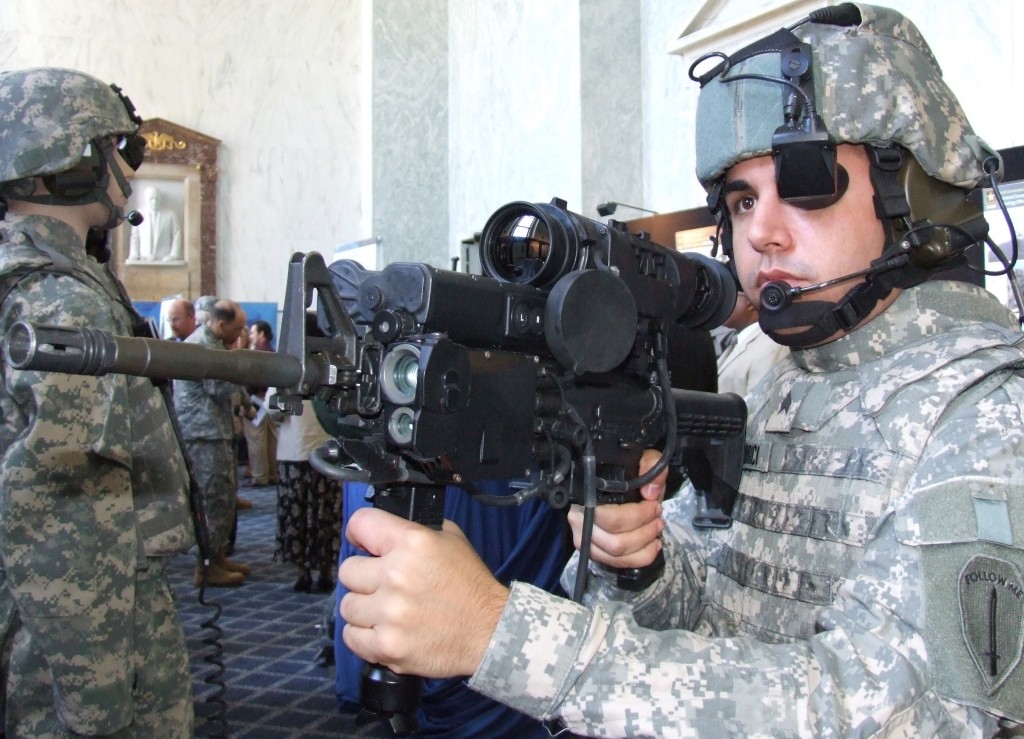Soldiers stick to tradition and question industry innovation when in the line of fire
Anywhere in the world, in every single military force, there is a debate about technological improvements in equipment. For the majority of the time, more experienced soldiers that have been on the battlefield are reluctant to accept new equipment, while newer recruits are excited to try out the latest models. In this case, the most conservative choices might be the best ones.
There aren’t many soldiers in the world who haven’t dreamt about a piece of gear that would make them invincible on the battlefield, equipment that would enable them to see and shoot farther, hear more clearly, communicate in a more efficient way, and above all, be protected better from enemy fire. If such equipment existed, it would have already been purchased by militaries around the globe. On paper, some technological innovations might look close to what soldiers would consider the Holy Grail. And yet, soldiers from many nations have tested these latest models and have since been reluctant to put them to action.

Too often, personal equipment for soldiers is designed in offices and proven to be uncomfortable to use during combat – whether they are too heavy to carry, not adaptable to extreme weather conditions, have short battery lives, etc. Most of these technologies have been tested before they even get to the battlefield, however when put to use, certain conditions can change the game, for instance unanticipated stress, geographic location changes, extending missions, and it’s these elements that could make even the best equipment a potential threat when in a life or death situation.
Soldiers that have been on a battlefield more than once have come to the realization that rugged traditional equipment often proves to be more efficient than the latest high-tech models. How many Navy Seals have you seen testing out products that don’t have at least 10 years of proven efficiency? They may be considered ‘outdated’ at times, but remain one of the most powerful military forces globally.
For the case of the U.S. armed forces, it is easy to see that difference in efficiency between the different forces. In 2009, the U.S. army was equipping its ‘Alpha Company’ with what should have been the most advanced high-tech equipment for ground forces. After having spent a half-billion dollars and 15 years on R&D, the Pentagon was ready to outfit soldiers with a “high-tech battlefield network designed to cut through the fog of war,” but soldiers quickly realized that it would mainly slow them down in Iraq. “As Alpha kicks in doors, round up terror suspects and peals off automatic fire in deafening six-shot bursts, not one of the soldiers bothers to check his radio or look into the eyepiece to find his buddies on the electronic maps. ‘It’s just a bunch of stuff we don’t use, taking the place of useful stuff like guns,’ says Sgt. James Young, who leads a team of four M-240 machine-gunners and AK-47 rifles perched on a balcony during this training exercise at Fort Lewis, WA. ‘It makes you a slower, heavier target’.”(1)
In comparison, the image of excellence carried by the Marine Corps has never been challenged when, in fact, the Marine Corps is by nature more reluctant to new technologies. Marines prefer their old but trustable gear.
The French army is also known for its “rugged,” traditional or even “rustic” approach of military outfitting. They have been closely following the high-tech developments offered by the armament industry, but they kept in mind the soldier’s experience as the most important component. In fact, the combat system for the French infantry could have been compared to what the U.S. Army has experienced. But the French system is customized with different parts that can be chosen or not from battalion to battalion, depending on the mission, and thanks to Mali, CAR and Afghanistan operations, it’s now a combat-proven one.
The same goes for planes, ships, ground vehicles, etc. Innovation can be welcomed but soldiers typically feel more comfortable with the basic rugged equipment that has proven to be useful and efficient over the years, on various battlefields.
Within the ranks of the U.S. Marine Corps (USMC) there are also doubts about the F-35, initially thought of as one of the top fighter aircrafts. The USMC is expected to be its first customer, yet some questions remain unanswered. Some ally countries are also wondering if choosing the F-35 was the best call. What was seen as the future leader of air fighters might happen to be too costly in the long run. Today, Canada and Denmark are in this same situation (2). Canada seems to still be unsure which direction to take.
Denmark recently made a questionable decision by choosing the Piranha 5 armored vehicle over other more qualified vehicles. The Piranha V remains to be a mystery as far as hidden costs and real efficiency in combat goes. Denmark already made a similar choice previously by choosing the F-35 for its Air Force, and to date, questions remain whether or not it was a good long term investment.
At a time when militaries around the world are making crucial decisions in renewing their fleets and equipment, the voice of soldiers too often seem to be ignored or forgotten. The decisions are often based on industrial and economic factors, even when the users on the battlefield might see the limitations of the products. Increasingly, countries might be opting for the more traditional and rugged solutions, rather than burning up their money on what seems like impossible dreams that prove to be inefficient when put to use.
(1) The Army’s New Land Warrior Gear. Why soldiers don’t like it, Popular Mechanics, Noah Shachtman, September 30th 2009
(2) J-10B, F-35 Nearing In-Service Debuts, Amy Butler, Aviation Week & Space Technology, January 6th 2015


